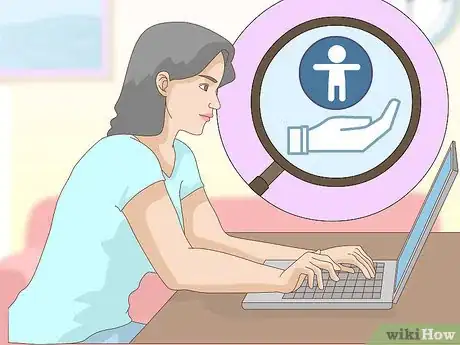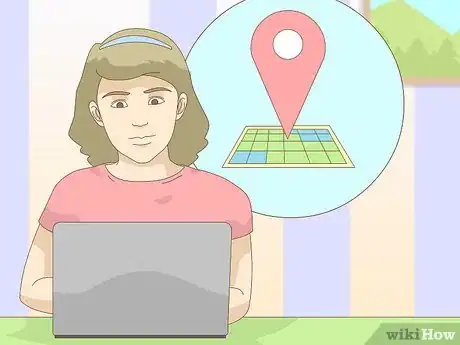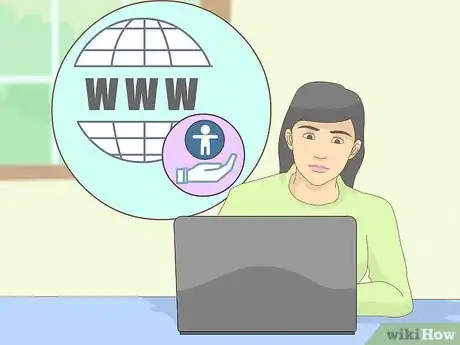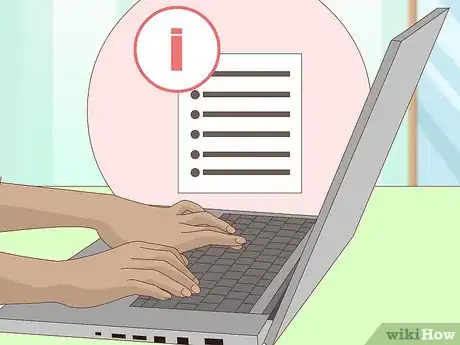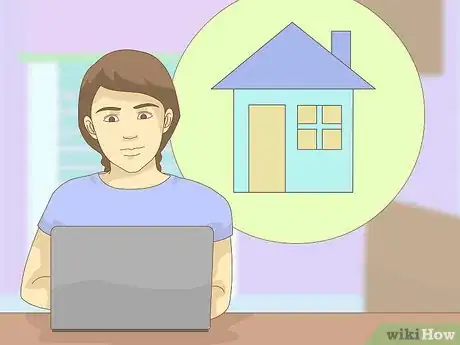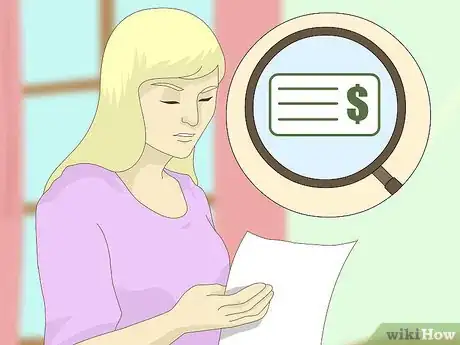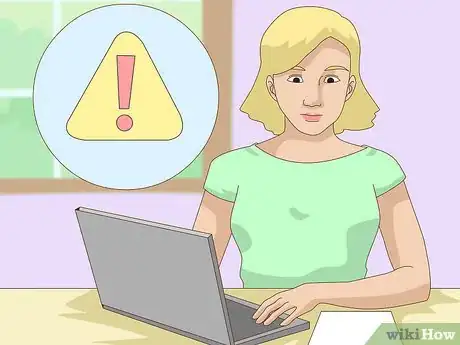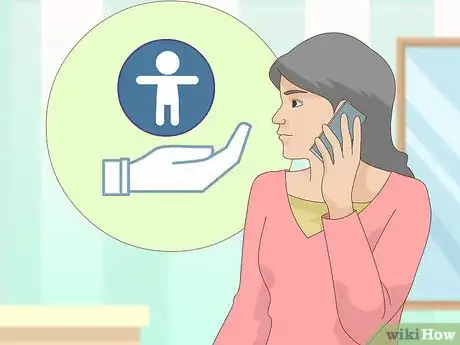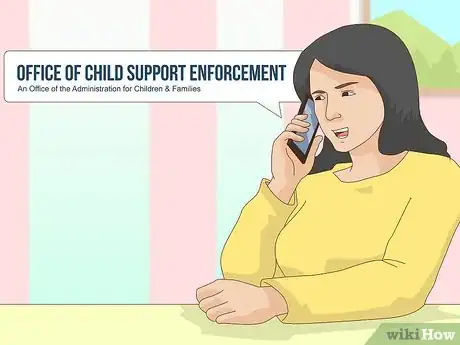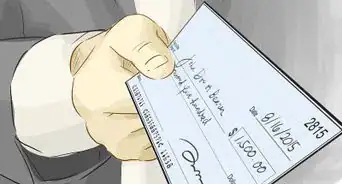This article was co-authored by Clinton M. Sandvick, JD, PhD. Clinton M. Sandvick worked as a civil litigator in California for over 7 years. He received his JD from the University of Wisconsin-Madison in 1998 and his PhD in American History from the University of Oregon in 2013.
There are 7 references cited in this article, which can be found at the bottom of the page.
This article has been viewed 43,667 times.
Child support payments are made for the care and maintenance of children, usually until the age of 18 or 21, depending on where the child lives and what the court orders. The payments are usually made according to an order of a court, although they can be made voluntarily. Payments can occur at varying intervals depending on the agreement or court order. Because of state and federal laws, most child support payments are now made through monitored state child support agencies, which enforce and oversee all payments for the child.[1] As a result, in most states it is possible for either the custodial parent (receiving the payments) or the non-custodial parent (making the payments) to monitor the record of payments.
Steps
Identifying the Appropriate Local Agency
-
1Find out what governmental agency provides enforcement for your child's area of residence. Every state, county, or other jurisdiction has an enforcement division for those who pay child support to persons in their area. The U.S. Department of Health and Human Services maintains a nationwide register of every state's child support agencies. You can identify the local agency for your state at http://www.acf.hhs.gov/programs/css/resource/state-and-tribal-child-support-agency-contacts.
- For example, in California, the child support agency is called the California Department of Child Support Services.
- In Nevada, the agency is called the State of Nevada Division of Welfare and Supportive Services.[2]
-
2Talk to the court that issued the child support orders. The court or local district attorney's office may be able to give you the name of the child support agency that you need to contact.[3]Advertisement
-
3Locate the agency for your state as well, if you live in a different state than the child. The agencies of the two states will communicate with each other, if necessary, if the non-custodial parent lives in a state that is different from that of the child. This is particularly true if the non-custodial parent has moved to a different state and is neglecting or refusing to pay.[4]
Creating Your Account
-
1Create a user identification account on the child support website in your child's state, county, or province. Using the U.S. Department of Health and Human Services link, http://www.acf.hhs.gov/programs/css/resource/state-and-tribal-child-support-agency-contacts, you can find the child support agency for your state. This site will have a link to create a user identification account. The user identification account is used to identify you and your information every time you log into the database. Both non-custodial parents (making the payments) and custodial parents (receiving the payments) can create accounts and can have access to review payments.[5]
- In California, you will visit the Child Support Services website and navigate to the area to check your child support payment status. From there you will log in with your pin Social Security number.[6]
- In Nevada, you can make child support payments online, but there is no service to keep track of the payments you make. You will have to do this through your bank. However, if you are the receiver of payments, you can receive a debit card or have the funds directly deposited into your bank account and keep track of payments that way.[7] [8]
-
2Provide all the required information to use the automated system. Although each state is different, most sites will require your complete name, address, email address, date of birth, and Social Security number. After you provide this information, you will receive a personal identification number. Your personal identification number allows you to gain access to your payment history.
-
3Give the agency the address to which your mail is sent. Some agencies will not provide you with instant access to your payment history. To protect your privacy, the privacy of the custodial parent and the child's privacy, the agency may send you your personal identification number in the mail.
Monitoring Payments as They Are Made or Received
-
1Verify automatic withholdings from your paycheck. In most cases, due to local and federal laws, child support payments may be required to come from direct paycheck withholdings. In such cases, the employer will note the amount withheld on your paycheck stub and will submit the amount directly to the child support agency. You should review your paycheck stubs regularly to make sure that that correct amount is being withdrawn.
-
2Check your payments on the registered website regularly. Two weeks after each payment is made or is due, check the website of the local child support agency to verify the payment was received.
- In addition to checking your payments, the California website also allows you to review case information and verify court dates and appointments.[9]
-
3Keep checking regularly. Remember that you remain responsible for making all your payments and making them on time. This is true whether you make the payments personally or have the payments withheld from your paycheck. If there is a problem with your employer's withholding, you need to address your payroll office and have it corrected. You cannot just let it go. If necessary, you can talk with the credit support agency as well.
Reporting Problems
-
1Understand your obligation. In most jurisdictions, you remain responsible for the payments, whether you make the payments directly or have them made by an employment withholding. Therefore, it is up to you to monitor the payment record and make any corrections that you believe are necessary.
-
2Contact your local child support agency first. If there is a problem, either in receiving payments on time or in making payments and having them credited to your account, the first contact should be to the local child support agency. This is the same agency that you contacted to initiate an account: http://www.acf.hhs.gov/programs/css/resource/state-and-tribal-child-support-agency-contacts. That agency will have the most control over your case and can investigate the payments and help you identify just where the problem is occurring.
-
3Contact the Federal Office of Child Support Enforcement. If the local agency cannot help resolve your concerns, you can contact this federal office, contained within the U.S. Department of Health and Human Services, for further assistance. You can find the link for this office at https://ocsetest.service-now.com/wf/webform.do.
-
4Contact your attorney. As with any other legal matters, if you believe that there is a problem with child support, and the governmental agencies cannot help, then your attorney may be able to take action within the court processes to correct the problem. But try to resolve the matter through the appropriate agencies before taking on the expense of added attorney work.
References
- ↑ http://www.acf.hhs.gov/programs/css/resource/release-of-the-national-child-support-strategic-plan-2015-2019
- ↑ http://www.acf.hhs.gov/programs/css/resource/state-and-tribal-child-support-agency-contacts
- ↑ http://www.nolo.com/legal-encyclopedia/making-spouse-pay-child-support-faq-29042.html
- ↑ http://www.nolo.com/legal-encyclopedia/making-spouse-pay-child-support-faq-29042-2.html
- ↑ http://www.acf.hhs.gov/programs/css/resource/state-and-tribal-child-support-agency-contacts
- ↑ http://www.childsup.ca.gov/portals/0/resources/docs/pub255_english.pdf
- ↑ https://dwss.nv.gov/Support/1_1_3Child_Support_-_Receiving_Payments/
- ↑ https://ipn.paymentus.com/rotp/DWSS
- ↑ http://www.childsup.ca.gov/portals/0/resources/docs/pub255_english.pdf
